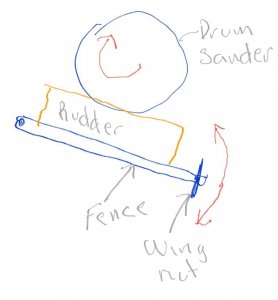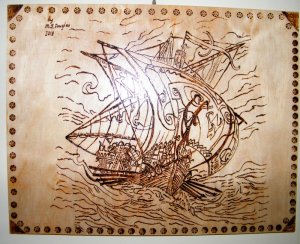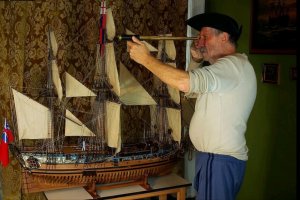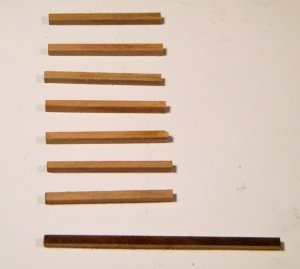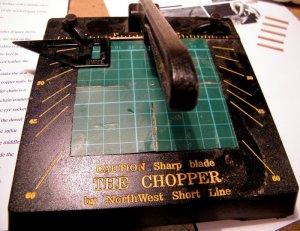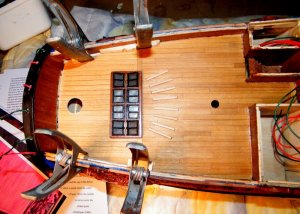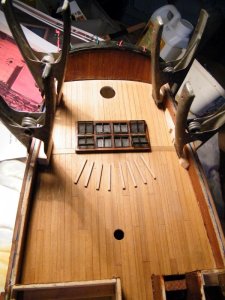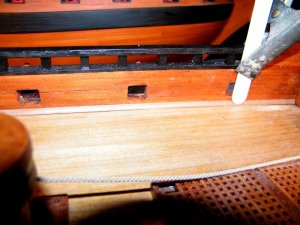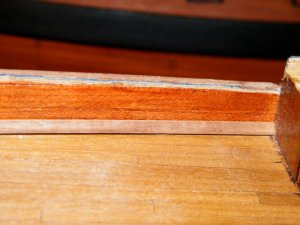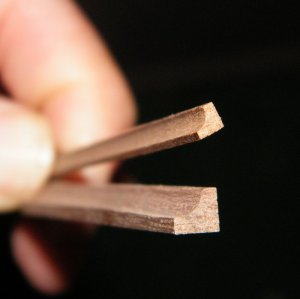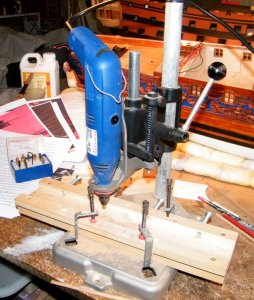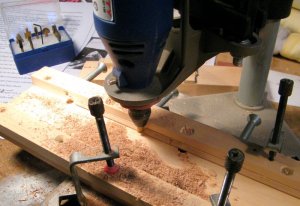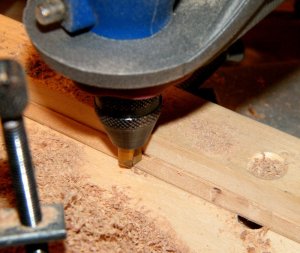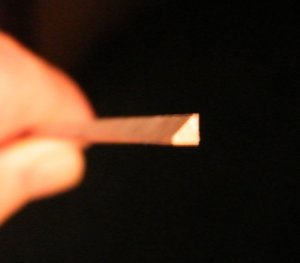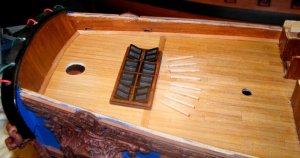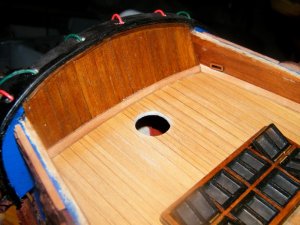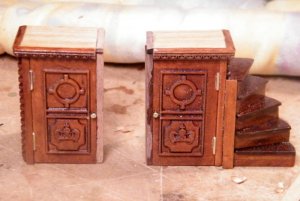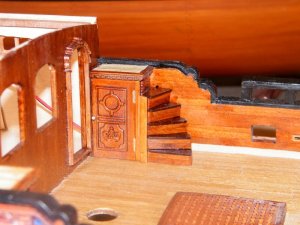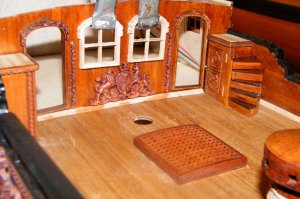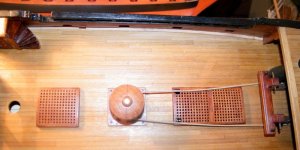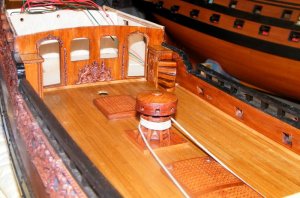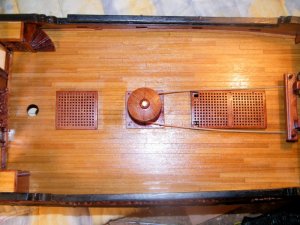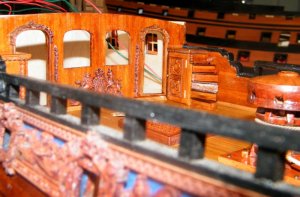While working on the rudder I decided to do most of the accessories that go with it, the leather boots and tiller arm etc,
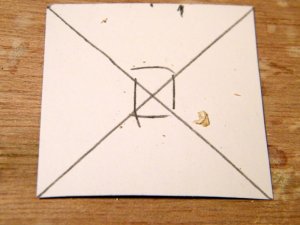
I cut some light cardboard to the shape of the material for the leather boots, to make a template with,
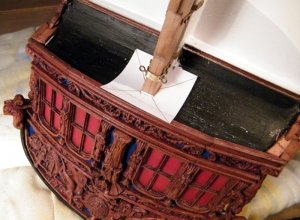
then i placed it on the upper part of the rudder so i could mark the shape it needed to be,
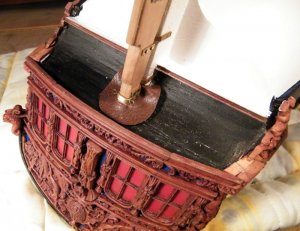
then I copied that shape onto the material provided and cut it out,

next up was the Tennon joint for attaching in place the tiller arm, shows the hole cut through
the top of the rudder,

the tiller arm in place after the rear was reduced in thickness to fit through the rudder head,
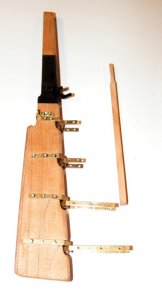
the rudder with the tiller arm next to it,
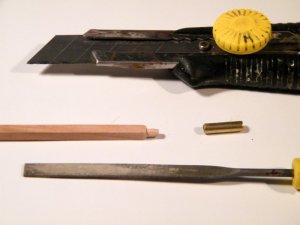
the front of the arm it had to be reduced to a round section so as to be able to take the brass tube as a
reinforcement, I used the knife to score around the arm and also to whittle it back and then finished it
off with a small flat file,
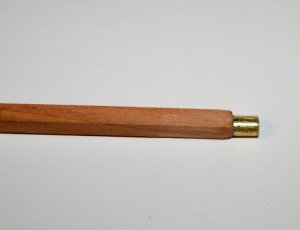
the brass reinforcement glued in place,
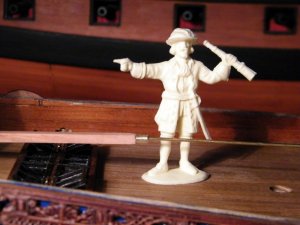
next up was to work out the height that the front part of the tiller needed to be raised to, I have some
1/30 scale figures so I used one of those for reference, I thought it would have to come up to around
his waist height to be comfortable and practical to use,
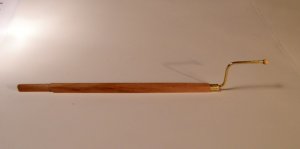
the finished arm, all apart from the varnish and paintwork,
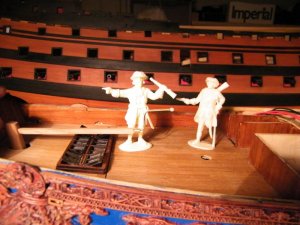
and temporarily in position
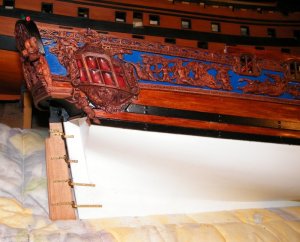
and lastly a pic of the rudder it will be painted white below the black,





